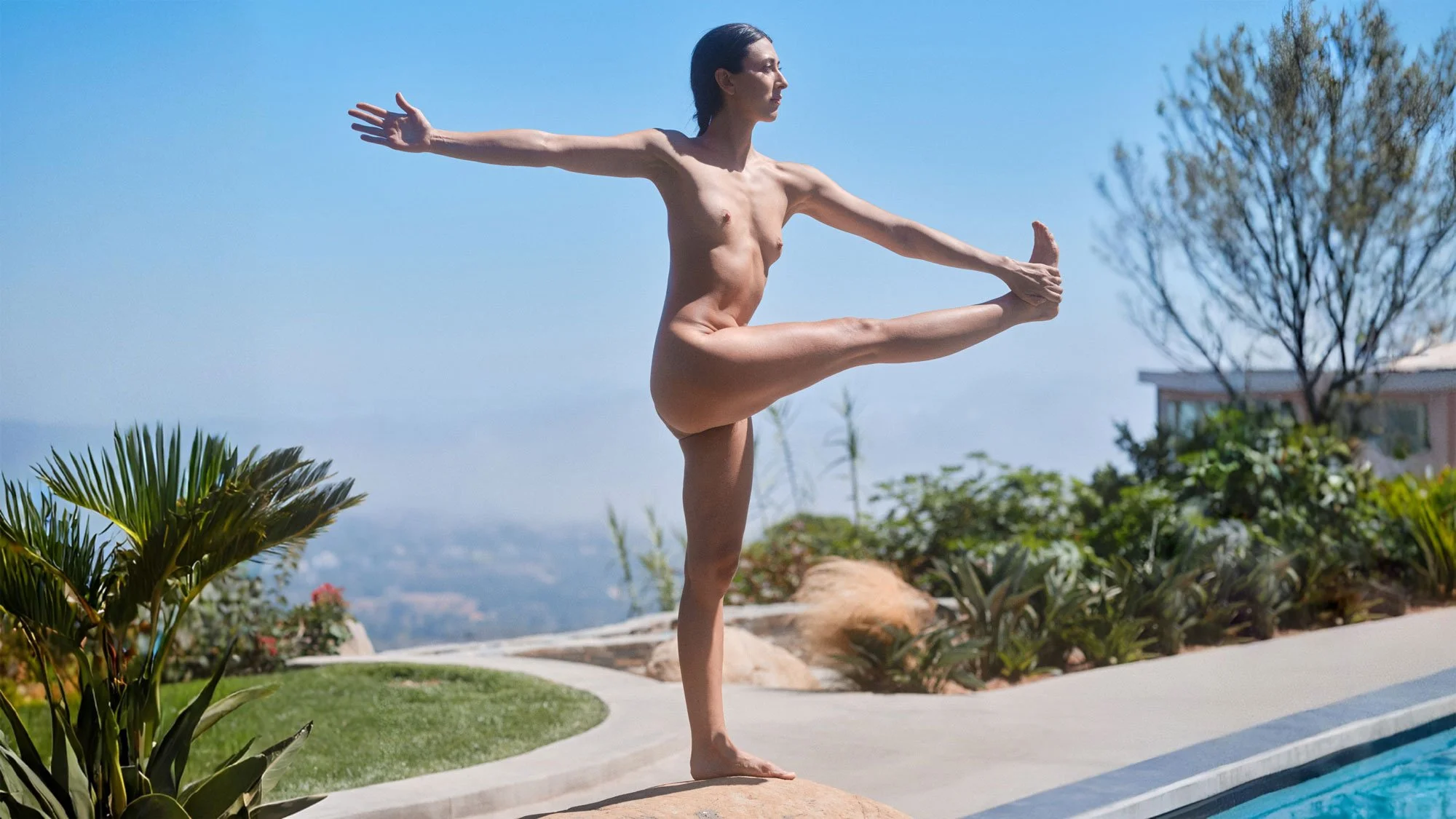Triangle Pose
Utthita Trikonasana
Triangle Pose aka Trikonasana is a beginner-friendly standing pose that is an essential building block towards achieving more challenging postures.
Triangle Pose aka Utthita Trikonasana is a standing pose that stretches and strengthens the hips, legs, and shoulders. It helps to improve balance, flexibility, and concentration.
Triangle Pose Steps
Step 1
Start in Tadasana, Mountain Pose.
Step 2
On an exhale, take a big step back with one foot and pivot the back foot forward at a 45 degree angle. The front toes continue pointing forward towards the top of your mat.
Step 3
Align your back heel or arch with the heel of the front foot. If you need more stability, you can tiptoe the front foot out to the side a few inches. Make sure both feet are firmly planted down into the mat.
Step 4
Turn the hips so that they are parallel with the long side of your mat. Start to draw the bellybutton in and up towards your ribcage.
Step 5
On an inhale, lift the arms to shoulder-height palms facing down. Relax the shoulders away from your ears.
Step 6
Start to pivot the hips and reach forward with the front hand so that your torso is moving forward on a separate plane from your legs, keeping a straight spine. Continue reaching forward until your hamstrings allow, and only to the point where you can keep your spine straight.
Step 7
On an exhale, reach your front fingertips down towards your ankle or shin. You can also place your front hand on a block, or bend the front knee and place your front forearm on your thigh. Make sure not to collapse into the front arm. Keep the spine long and straight.
Step 8
Reach the back arm up towards the ceiling, keeping the arms in line with each other. Gaze softly up towards your top fingertips, or down towards the mat if you feel discomfort in your neck.
Modifications
Before you attempt going into the full pose, try placing your lower hand on your shin or a block depending on your flexibility. You can also bend the front knee and place your forearm on your thigh for support.
If you feel really tight in the hamstrings, try stepping your feet closer together.
People with migraines, neck or back injuries should only do the pose reaching forward and not upward.
Benefits
• Stretches and strengthens the knees, thighs, and ankles.
• Strengthens the hips, hamstrings, and shoulders.
Cautions
• Disc and spinal injuries
• Migraines






